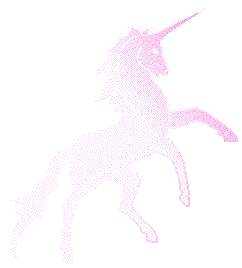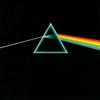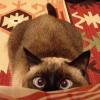Bine ati venit ca musafir! ( Logare | Inregistrare )
 Info Psihologie
Info Psihologie
Va invitam la dezbateri pe teme diverse, avand in centrul lor Omul. Domeniu umanist complex, relativ greu de surprins in ecuatii sau teorii unice, psihologia va fi si un pretext pentru a discuta despre emotii, minte si suflet.
  |
 9 Dec 2006, 11:10 PM 9 Dec 2006, 11:10 PM
Mesaj
#1
|
|
 Cronicar       Grup: Admin Mesaje: 5.082 Inscris: 26 December 05 Din: Bucuresti Forumist Nr.: 7.531 |
Revoluţie īn cunoaştere
publicat la 8 August 2006 sursa: Active Information Media O noua revoluţie īn cunoaştere Teoria morfogenetică ™, īncă de la descoperirea ei de către Rupert Sheldrake, a suscitat vii controverse. Reacţiile īn lumea ştiinţifică au fost atāt de aprinse īncāt unii savanţi au fost chiar de părere că "Sheldrake pune magia īnaintea ştiinţei şi poate fi condamnat īn exact acelaşi limbaj īn care Papa l-a condamnat pe Galileo, şi pentru acelaşi motiv. Este erezie." Dincolo de aceste "opinii" care nu mai păstrează nimic ştiinţific īn ele şi care ne amintesc mai degrabă de diverse īnchistări şi dogme religioase, TM şi-a dovedit pānă acum īn foarte multe cazuri valabilitatea şi, pentru cel cu mintea deschisă, reprezintă un instrument foarte preţios prin intermediul căruia pot fi explicate o serie īntreagă de fenomene şi, mai mult decāt atāt, pot fi chiar generate şi stabilizate altele. Sheldrake fiind de profesie biolog, a fost uimit de anumite fenomene din lumea fiinţelor vii, care nu puteau fi explicate īn niciun fel, pāna la el. Vom descrie aici două experimente celebre, care au dus la fundamentarea acestei teorii. Īn primul dintre ele, profesorul William McDougall de la Harvard testa īn 1920 inteligenţa şoarecilor. Pentru aceasta a folosit un labirint, prin care şoarecii trebuiau să treacă pentru a găsi hrana. Īn experiment se nota timpul īn care şoarecii reuşeau să ajungă la hrană. Spre uimirea lui, a constatat că pe masură ce apăreau noi generaţii de şoricei, timpul mediu īn care aceştia ajungeau la hrană devenea tot mai mic, astfel īncāt generaţia a 20-a de şoareci ajungea īn medie la hrană de zece ori mai repede decāt prima generaţie. A fost ca şi cum o īnvăţătură a celor adulţi se transmitea la copii. McDougall ştia, la fel ca noi toţi, că genetic nu se poate transmite īnvăţătura, decāt poate cel mult anumite instincte. De aceea, rezultatele sale au fost tratate cu mult scepticism. Pentru a-l contra pe McDougall, o echipă de oameni de ştiinţă din Edimburgh a duplicat experimentul, folosind exact acelaşi labirint ca şi McDougall. Rezultatele lor au fost şi mai uluitoare: prima generaţie de soareci a parcurs labirintul aproximativ īn acelaşi timp ca generaţia 20 a lui McDougall, iar unii dintre şoricei au găsit drumul aproape imediat, mergānd direct la ţintă. Īn acest caz explicatiile genetice puteau fi eliminate din start şi la fel şi alte explicaţii bazate pe urme de miros, feromoni, etc. Cu toate acestea, experienţa şoriceilor de la Harvard a trecut oceanul, ajungānd la cei din Anglia, fără să existe nici o explicaţie fizică pentru aceasta. Un al doilea experiment a avut loc īn 1952 pe insula Koshima, unde o specie de maimuţe (Macaca Fuscata) a fost observată timp de 30 de ani. La un moment dat cercetătorii au īnceput să ofere maimuţelor fructe dulci, aruncate īn nisip. La maimuţe le plăceau foarte mult fructele, dar trebuiau să le mănānce acoperite cu nisip, ceea ce era neplăcut pentru ele. La un moment dat o femela de 18 luni, numita Imo, a descoperit că putea rezolva problema spălānd fructele īntr-o apă din apropiere. Imo i-a arătat aceasta mamei ei. Totodată colegii ei de joacă au īnvăţat aceasta şi şi-au īnvăţat şi familiile cum să facă. Oamenii de ştiinţă au asistat la felul īn care din ce īn ce mai multe maimuţe au īnvăţat cum să spele fructele īn apă. Īntre 1952 şi 1958, toate maimuţele tinere din colonie au īnvăţat spălatul fructelor. Doar unele dintre maimuţele adulte, care au imitat copii, au aplicat şi ele acest lucru. Celelalte maimuţe adulte au continuat să mănānce fructele pline de nisip. Apoi ceva uimitor s-a īntāmplat: de la un anumit număr de maimuţe care īşi spălau fructele, brusc fenomenul a luat o amploare explozivă. Dacă dimineaţa doar o parte din maimuţe foloseau această cunoaştere, seara aproape toate maimuţele deja spălau fructele. De asemenea alte colonii de maimuţe din alte insule, precum şi maimute de pe continent, au īnceput aproape imediat să-şi spele fructele. Nici īn acest caz nu a putut fi găsită o explicaţie convenţională cum cunoaşterea s-a răspāndit aşa de repede, trecānd apa, fără să fi existat contacte directe īntre diversele colonii de maimuţe. Rupert Sheldrake, analizānd aceste cazuri, a avansat ideea unor campuri morfice (sau formatoare, generatoare), care aveau rolul de a menţine cunoaşterea oricăror fenomene, nu doar din lumea vie, ci şi din cea minerală sau chiar cuantică. El a postulat că aceste campuri īnregistrau īntr-un anumit fel toate informaţiile despre diverse evenimente, iar apoi exercitau o influenţă formatoare asupra tuturor fiinţelor sau obiectelor similare cu cele care au generat evenimentele respective, astfel īncāt noile evenimente să se īncadreze oarecum īn noul tipar. Am putea să asemănăm aceste cāmpuri morfice (CM) cu un fel de matriţe īn care este turnat metalul topit pentru ca să ia forma respectivă. O comparaţie şi mai bună este cu pămāntul peste care plouă. Iniţial acesta este perfect plan, dar apoi apa īncepe să sape mici şanţuri prin care se poate scurge mai repede. Gradat aceste şanţuri se adāncesc şi din ce īn ce mai multă apă curge pe acolo. Īn comparaţia noastră, şanţurile sunt noile cāmpuri morfice create, care crează obişnuinţa ca lucrurile să se petreacă predominant īntr-un anumit fel şi nu īn altul. Īn linii mari, teoria morfogenetică explică mult mai aprofundat şi extinde ceea ce noi numim "obişnuinţă". Din momentul postulării ei, teoria morfogenetică s-a dovedit imediat un instrument excepţional. Deja puteau fi explicate o serie īntreagă de fenomene, din cele mai diverse domenii. De exemplu, īn psihologie aplicabilitatea a fost imediată, şi de fapt TM s-a potrivit perfect cu alte descoperiri din acest domeniu, cum ar fi teoria subconştientului colectiv a lui C.G. Jung. Īn cercetările sale, Jung a descoperit anumite fenomene stranii, care nu puteau fi explicate dacă nu ar exista un gen de conexiune īntre membrii aceleiaşi specii. De exemplu, Jung a descoperit că unii eschimoşi aveau vise cu şerpi sau păianjeni, deşi aceştia nu există īn cercul polar şi nici nu existau alte surse de unde să afle despre existenţa lor. De fapt, nici eschimoşii īn cauză nu ştiau cu ce visează, dar cānd desenau imaginile respective, cineva putea recunoaşte imediat despre ce era vorba. Astfel, Jung a postulat ideea unui subconştient colectiv la care fiecare membru al speciei este mai mult sau mai puţin cuplat, şi prin intermediul căruia are acces la o serie īntreagă de cunoştinţe, arhetipuri şi obiceiuri. Acest subconştient colectiv corespunde parţial cāmpurilor morfice din teoria morfogenetică. ****** Cititi continuarea pe site... Articol şi comentarii preluate de AIM de la Kambox.net ****** Mi se pare interesantă această teorie, pentru faptul că evidenţiază un cāmp informaţional īn care suntem cu toţii scufundaţi şi care mi se pare incontestabil... Ce părere aveţi despre această teorie? Comentaţi liber. -------------------- pantha rhei
Universul Fractal The universe appears to be fractal, cyclic and self-regenerating. Implied is that it is eternal and infinite. |
|
|
|
 10 Dec 2006, 12:09 AM 10 Dec 2006, 12:09 AM
Mesaj
#2
|
|
 Filosof boem       Grup: Membri Mesaje: 6.222 Inscris: 10 July 03 Din: Bucuresti Forumist Nr.: 445 |
Am cautat dar nu am reusit sa gasesc vreo referinta credibila pentru experimentul cu soarecii despre care se vorbeste acolo. [...]
Acest topic a fost editat de calfa: 10 Dec 2006, 09:12 AM -------------------- A nation cannot prosper for long when it favors only the prosperous - Obama
|
|
|
|
 10 Dec 2006, 11:06 AM 10 Dec 2006, 11:06 AM
Mesaj
#3
|
|
 Soul feeder       Grup: Membri Mesaje: 3.735 Inscris: 7 November 05 Forumist Nr.: 7.214 |
Mă bucur că ai adus īn discuţie acest element de percepţie, Erw.
Exprimarea ta este optimă: cāmpul informaţional care ne include este incontestabil. -------------------- TÄrĆ¢mul PoveÅtilor.
Loc cu poveČti Let your weird light shine bright, so the other weirdos know where to find you. |
|
|
|
| Promo Contextual |
 10 Dec 2006, 11:06 AM 10 Dec 2006, 11:06 AM
Mesaj
#
|
|
ContextuALL |
|
|
|
|
 10 Dec 2006, 01:05 PM 10 Dec 2006, 01:05 PM
Mesaj
#4
|
|
 Cronicar       Grup: Admin Mesaje: 5.082 Inscris: 26 December 05 Din: Bucuresti Forumist Nr.: 7.531 |
Bună Cătălin,Fantasee. Ştiu că este un subiect controversat, de aceea am unele reţineri că l-am postat unde trebuie... eventual să-l fi pus īn Arhipelag?
Ceea ce aş vrea să discutăm e tocmai despre ideea că s-ar putea să existe şi alte forme de transmitere a informaţiilor decāt cele arhicunoscute, care poate că n-au aceeaşi relevanţă sau persuasiune, dar n-avem alte explicaţii pentru fenomenele resprective... Eu cred că există o clasă de fenomene irepetabile (şi nu sunt chiar puţine, mai ales īn domeniile care implică activitatea minţii umane) greu de dovedit experimental şi īn contextul modelelor şi teoriilor ştiinţifice care se bazează mult şi uneori exclusiv pe repetabilitate, pe reproducerea fenomenelor īn condiţii controlate strict, īn laboratoare, sau mai puţin strict, in situ, īn scopul de a găsi nişte legi formale pentru a explica cu precizie matematică acele fenomene... Acest topic a fost editat de Erwin: 10 Dec 2006, 01:06 PM -------------------- pantha rhei
Universul Fractal The universe appears to be fractal, cyclic and self-regenerating. Implied is that it is eternal and infinite. |
|
|
|
 10 Dec 2006, 02:02 PM 10 Dec 2006, 02:02 PM
Mesaj
#5
|
|||||||
 Filosof boem       Grup: Membri Mesaje: 6.222 Inscris: 10 July 03 Din: Bucuresti Forumist Nr.: 445 |
Poate la Dincolo de ratiune.
Ok, hai sa discutam despre aceasta idee. Ea presupune existenta "fenomenelor respective" pentru care n-am avea explicatii. Pai inainte sa pornim o discutie bazata pe acele fenomene, hai sa le punem pe tapet in mod riguros. Care-s fenomenele si unde/cand/cum au fost observate? "niste oameni de stiinta din Edimburgh [sic!]" nu este o exprimare de la care sa putem pleca in mod serios intr-o discutie.
Dar ce importanta are aceasta clasa de fenomene? cele descrise pe acest topic se zice ca ar fi repetabile si chiar ca au fost repetate si chiar de oameni de stiinta. -------------------- A nation cannot prosper for long when it favors only the prosperous - Obama
|
||||||
|
|
|||||||
 10 Dec 2006, 02:15 PM 10 Dec 2006, 02:15 PM
Mesaj
#6
|
|||||||
 Cronicar       Grup: Moderator Mesaje: 2.894 Inscris: 7 December 03 Forumist Nr.: 1.410 |
Adica te referi la ceea ce se studiaza, printre altele, la Princeton Engineering Anomalies Research (Scientific Study of Consciousness-Related Physical Phenomena) ?
Da, vad ca oamenii de acolo au si publicat cate ceva ...
Nu am timp sa citesc chiar tot, dar cu cativa ani in urma am rasfoit cateva din articolele lor. -------------------- ... incertitude in certitude ... independence in dependence ... insight in sight ...
|
||||||
|
|
|||||||
 10 Dec 2006, 03:08 PM 10 Dec 2006, 03:08 PM
Mesaj
#7
|
|||||
 Cronicar       Grup: Moderator Mesaje: 2.894 Inscris: 7 December 03 Forumist Nr.: 1.410 |
PEAR este afiliat la Society of Scientific Exploration (SSE) unde colaboreaza la un Young Investigators Program (http://www.scientificexploration.org/yi/programs.php) cu
Cei de la Koestler Parapsychology Unit apar in structura academica (http://www.ed.ac.uk/about/structure/academic.html) a University of Edinburgh, in cadrul School of Philosophy, Psychology & Language Sciences, iar in paginile lor sunt mentionate alte centre de cercetare in domeniu ... http://moebius.psy.ed.ac.uk/~info/ResearchCentres.php3 si societati si asociatii cu care conlucreaza ... http://moebius.psy.ed.ac.uk/~info/SocAssoc.php3. Printre centrele de cercetare ar fi:
-------------------- ... incertitude in certitude ... independence in dependence ... insight in sight ...
|
||||
|
|
|||||
 10 Dec 2006, 03:45 PM 10 Dec 2006, 03:45 PM
Mesaj
#8
|
|||
 Cronicar       Grup: Admin Mesaje: 5.082 Inscris: 26 December 05 Din: Bucuresti Forumist Nr.: 7.531 |
Cătălin
este un pic off-topic, desigur, are legătură doar cu propria mea viziune despre lume (am scris despre asta īn altă parte) şi am adus-o īn discuţie doar ca introducere, mie mi se pare că trebuie să ţinem seama de această distincţie īntre repetabil şi irepetabil atunci cānd vorbim despre teorii controversate, desprinse de curentul principal al ştiinţei care pretinde dovezi reproductibile... Eu zic că are relevanţă şi o discuţie la nivel de idei şi nu resping din start nici o teorie pentru motivul că nu are astfel de dovezi (deocamdată)... Dacă nu sunt accesibile pe net dovezi că acele experimente pomenite īn articol au avut īntr-adevăr loc, asta nu īnseamnă că nu putem să discutăm idea cāmpurilor morfogenetice... eu nu sunt nici sceptic şi nici convins că teoria este valabilă doar cu poveştile din articol... vreau doar să aflu mai multe. Calfa, N-am citit nici eu prea multe despre subiect, poate merită, poate nu... on-topic Este cert că īn toate fenomenele există o componentă informaţională fără de care ele n-ar mai avea loc, a decela acele informaţii particulare īnseamnă a cunoaşte fenomenul. Dacă regăsim un pattern comun īn mai multe fenomene putem avea de-a face cu o lege a naturii sau cu o pură īntāmplare... Teoria īn discuţie īncearcă să explice pattern-ul comun al obişnuinţelor printr-un substrat informaţional numit cāmp morfogenetic. Nu este deloc clar care este suportul fizic al acestui substrat şi unde anume sunt stocate imensitatea de informaţii necesare. Eu sunt de acord că există un cāmp informaţional format din totalitatea mediilor şi suporţilor cunoscuţi sau necunoscuţi, iar dacă aceste cāmpuri morfogenetice nu se regăsesc īn partea cunoscută nu īnseamnă ca nu ar putea exista. A-i dovedi existenţa este dificil, nu a īnţelege ideea ca atare. Este important să definim concret toate acele fenomene dacă ne rezumăm la a analiza ideea? -------------------- pantha rhei
Universul Fractal The universe appears to be fractal, cyclic and self-regenerating. Implied is that it is eternal and infinite. |
||
|
|
|||
 10 Dec 2006, 04:03 PM 10 Dec 2006, 04:03 PM
Mesaj
#9
|
|||||
 Cronicar       Grup: Moderator Mesaje: 2.894 Inscris: 7 December 03 Forumist Nr.: 1.410 |
Erwin, in articolul citat de tine se vorbeste despre niste experiemente reluate si de altii, desi nu se insista pe asta. Daca exista fenomenele de tip anomalie, studiate intens dupa cum ai vazut, ele ar putea fi baza unui astfel de "camp". Numai ca acele fenomene se petrec la alta scara decat cele la care sunt experimentele citate de tine. Cine ne impiedica sa presupunem ca fenomene greu repetabile si detectate de instrumentele de masurare actuale ca avand amplitudini foarte mici, dar care se intampla, la o scara la care noi nu avem acces direct, ci doar prin foarte complicate intrumente si experimente, ar putea fi baza pentru COMPORTAMENTE repetabile la fiinte animale si umane, la scara la care acestea se afla ? Daca ar fi asa, atunci sursele citate de mine ar sustine exact ceea ce inteleg ca doreai sa discutam ...
Asadar, conform dorintei tale, care ai lansat subiectul acesta, mi se pare normal sa discutam in primul rand despre "campurile morfice" sau cum s-or fi numind ele, in ideea de a stabili eventuale legaturi cu cercetarile legate de anomalii in fenomenele fizice legate de constiinta (Anomalies Research - Consciousness-Related Physical Phenomena). Cum spuneam, eu am mai citit ideile lor. Acest topic a fost editat de calfa: 11 Dec 2006, 12:01 AM -------------------- ... incertitude in certitude ... independence in dependence ... insight in sight ...
|
||||
|
|
|||||
 10 Dec 2006, 09:20 PM 10 Dec 2006, 09:20 PM
Mesaj
#10
|
|||
 Ex-Merlina       Grup: Membri Mesaje: 3.045 Inscris: 2 December 05 Din: Iasi Forumist Nr.: 7.384 |
@Erwin
In viteza calului o sa scriu si eu cateva randuri. Parerea care o am este urmatoarea: Desi se misca, materia vie este mai mult decat o locomotiva cu aburi, desi este receptoare si emitatoare de semnale/informatie, este mai mult decat telefonul mobil. Nu mi se pare iesit din comun faptul ca daca creierul este emitator de unde, el sa poata fi in aceeasi masura si receptor pentru acelasi tip de unde (care pot transporta informatii de toate tipurile). Poate ca omul fiind o fiinta mai evoluata, intr-o oarecare masura este si mai individualizata...De aceea poate ca la fiintele mai putin evoluate anumite informatii sa se poata transmite instantaneu prin astfel de unde desi nu sunt in contact direct. Cine stie, s-ar putea sa depindem mult mai mult unii de altii decat putem crede. -------------------- |
||
|
|
|||
 10 Dec 2006, 09:36 PM 10 Dec 2006, 09:36 PM
Mesaj
#11
|
|
 Musteriu  Grup: Musterii Mesaje: 17 Inscris: 21 November 06 Forumist Nr.: 8.974 |
Ştiu de mult de experimentul ăsta. După părerea mea e o dovadă a faptului că īn cazul speciilor de animale există un suflet-grup, de aceea atunci cānd anumiţi indivizi evoluează capacităţile dobāndite se transmit īntregii specii. Nu cred īnsă că e valabil şi la oameni.
-------------------- Īntr-un sistem totalitar nu poţi vorbi īmpotriva guvernului, iar īn sistemul corporativ īmpotriva sponsorului.
|
|
|
|
 11 Dec 2006, 12:36 AM 11 Dec 2006, 12:36 AM
Mesaj
#12
|
|||||
 Cronicar       Grup: Admin Mesaje: 5.082 Inscris: 26 December 05 Din: Bucuresti Forumist Nr.: 7.531 |
deocamdată am reuşit să parcurg articolul privind experimentele făcute de PEAR ... rezultatele sunt semnificative statistic şi demonstrează capacitatea oamenilor de a īmpărtăşi viziunea unei scene fără a intra īn vreun fel īn contact, mai degrabă decāt de a transmite informaţii despre scena respectivă, indiferent de distanţă, timp sau alţi factori consideraţi īn analiza datelor, dar, pe măsură ce metodele de evaluare au fost perfecţionate s-a constatat că rezultatele favorabile se diminuează, concluzia cercetătorilor fiind că zgomotul sau lipsa īngrădirilor dinainte impuse īn evaluarea informaţiilor privind scena din test favorizează obţinerea unor rezultate semnificativ statistic mai bune decāt īn cazul testelor care foloseau o metodologie mai riguroasă şi mai rigidă, specificaţiile mai stricte fiind de natură să influenţeze această modalitate de percepţie extrasenzorială ce mi se pare īnsă relevant pentru discuţia noastră este:
-------------------- pantha rhei
Universul Fractal The universe appears to be fractal, cyclic and self-regenerating. Implied is that it is eternal and infinite. |
||||
|
|
|||||
 11 Dec 2006, 01:06 AM 11 Dec 2006, 01:06 AM
Mesaj
#13
|
|
 Cronicar       Grup: Admin Mesaje: 5.082 Inscris: 26 December 05 Din: Bucuresti Forumist Nr.: 7.531 |
dar scepticii relevă că rezultatele experimentelor PEAR cu privire la psihokinezie sau influenţarea maşinilor de către minte sunt mai degrabă sub limita de 0,1% acceptată de obicei īn ştiinţă ca semnificativ statistic
-------------------- pantha rhei
Universul Fractal The universe appears to be fractal, cyclic and self-regenerating. Implied is that it is eternal and infinite. |
|
|
|
 11 Dec 2006, 01:39 AM 11 Dec 2006, 01:39 AM
Mesaj
#14
|
|
 Cronicar       Grup: Admin Mesaje: 5.082 Inscris: 26 December 05 Din: Bucuresti Forumist Nr.: 7.531 |
iată şi demolarea "experimentului cu maimuţe"
-------------------- pantha rhei
Universul Fractal The universe appears to be fractal, cyclic and self-regenerating. Implied is that it is eternal and infinite. |
|
|
|
  |

|
Versiune Text-Only | Data este acum: 20 April 2024 - 09:41 AM |














